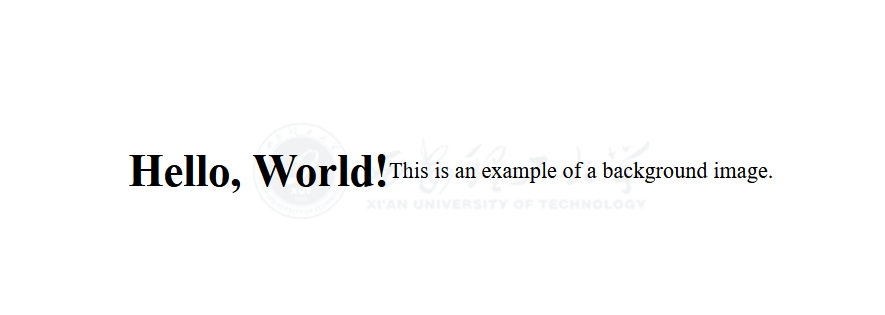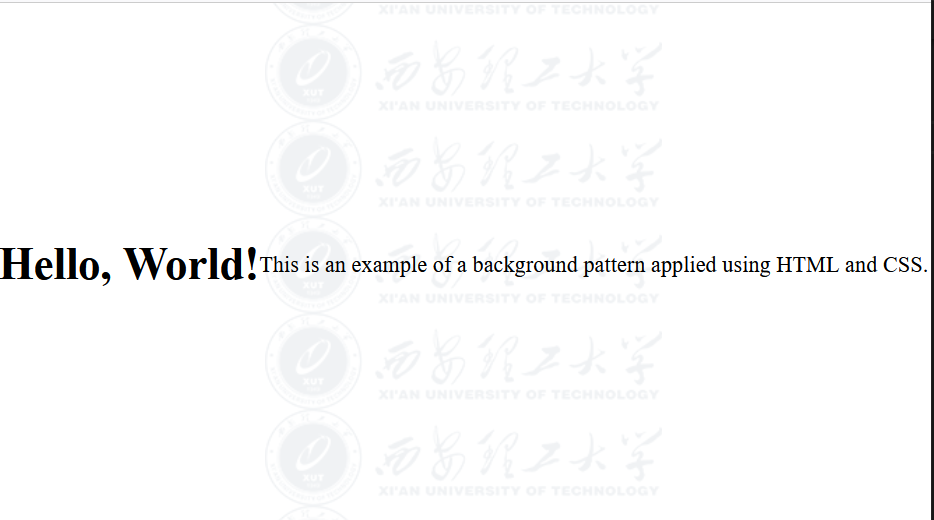h20 HTML Backgrounds
The background of a webpage is a layer behind its content, which includes text, images, colors and various other elements. It is an essential part of web design, that improves the overall look of a web page as well as user experience. HTML offers multiple attributes and properties for manipulating the background of elements within a document.
By default, our webpage background is white in color. We may not like it, but no worries. HTML provides the following two good ways to decorate our webpage background.
-
HTML Background with Colors
-
HTML Background with Images
Setting Background Color
An elementary method to modify the background is by altering its color. The background-color property facilitates the specification of a color for an element's background. This can be accomplished by incorporating the following style attribute within the opening tag of an HTML element −
Example
<!DOCTYPE html> <html lang="en"> <head> <meta charset="UTF-8"> <meta name="viewport" content="width=device-width, initial-scale=1.0"> <title>Styled Div Example</title> </head> <body> <div style=" color: #4bb354; background-color: #3498db;"> <h1>Welcome to My Website</h1> <p>This is an example of a styled div with a background color and text color.</p> <!-- Additional content goes here --> </div> </body> </html>

In the above example, the background-color property is assigned the hexadecimal color code #3498db, representing a shade of blue. Simultaneously, the color property is utilized to set the text color within the element.
Setting Background Image
HTML allows us to specify an image as the background of our HTML web page or table. The background and background-image are used to control the background image of an HTML element, specifically page body and table backgrounds. We simply need to pass the path of an image as a value to both properties as illustrated in the next example −
Example
<!DOCTYPE html> <html lang="en"> <head> <meta charset="UTF-8"> <meta name="viewport" content="width=device-width, initial-scale=1.0"> <title>HTML Background Image</title> <style> /* Add any additional styles here if needed */ body { margin: 0; padding: 0; } .custom-background { background-image: url('tp-background.jpg'); background-repeat: no-repeat; background-position: center; /* Add any additional styles for the container here */ height: 100vh; /* Adjust the height as needed */ display: flex; justify-content: center; align-items: center; color: #000000; } </style> </head> <body> <div class="custom-background"> <!-- Content goes here --> <h1>Hello, World!</h1> <p>This is an example of a background image.</p> </div> </body> </html>

In the above example, the background-image property is assigned to the body of web page.
Background Repeat and Position
HTML offers options for controlling how background images repeat and their positioning. The background-repeat property specifies whether the image should repeat horizontally, vertically, both, or neither. Furthermore, the background-position property empowers developers to determine where the background image should be positioned within the element.
Example
<!DOCTYPE html> <html lang="en"> <head> <meta charset="UTF-8"> <meta name="viewport" content="width=device-width, initial-scale=1.0"> <title>HTML Background Repeat</title> <style> /* Add any additional styles here if needed */ body { margin: 0; padding: 0; } .custom-background { background-image: url('logo.png'); background-repeat: repeat-y; background-position: center; /* Add any additional styles for the container here */ height: 100vh; /* Adjust the height as needed */ display: flex; justify-content: center; align-items: center; color: #000000; } </style> </head> <body> <div class="custom-background"> <!-- Content goes here --> <h1>Hello, World!</h1> <p>This is an example of a background pattern applied using HTML and CSS.</p> </div> </body> </html>

The above HTML program creates a webpage with a centered content div having a repeating vertical background pattern from the specified image. The background color of the container is set to white by default, and the text within the container is styled with a black color, creating a visually appealing and cohesive design.
Patterned & Transparent Backgrounds
You might have seen many pattern or transparent backgrounds on various websites. This simply can be achieved by using patterned image or transparent image in the background.
It is suggested that while creating patterns or transparent GIF or PNG images, use the smallest dimensions possible even as small as 1x1 to avoid slow loading.
Example
Here is an examples to set background pattern of a table −
<!DOCTYPE html> <html> <head> <title>HTML Background Images</title> </head> <body> <!-- Set a table background using pattern --> <table background = "pattern1.gif" width = "100%" height = "100"> <tr> <td> This background is filled up with a pattern image. </td> </tr> </table> <!-- Another example on table background using pattern --> <table background = "pattern2.gif" width = "100%" height = "100"> <tr> <td> This background is filled up with a pattern image. </td> </tr> </table> </body> </html>





【推荐】国内首个AI IDE,深度理解中文开发场景,立即下载体验Trae
【推荐】编程新体验,更懂你的AI,立即体验豆包MarsCode编程助手
【推荐】抖音旗下AI助手豆包,你的智能百科全书,全免费不限次数
【推荐】轻量又高性能的 SSH 工具 IShell:AI 加持,快人一步
· 开源Multi-agent AI智能体框架aevatar.ai,欢迎大家贡献代码
· Manus重磅发布:全球首款通用AI代理技术深度解析与实战指南
· 被坑几百块钱后,我竟然真的恢复了删除的微信聊天记录!
· 没有Manus邀请码?试试免邀请码的MGX或者开源的OpenManus吧
· 园子的第一款AI主题卫衣上架——"HELLO! HOW CAN I ASSIST YOU TODAY
2014-05-18 Windows Myeclipse 10 安装 Perl 插件
2010-05-18 14个优化网站性能提高网站访问速度技巧
2009-05-18 如何查看sql server版本号
2009-05-18 BlogEngine.NET Extensions
2009-05-18 BlogEngine.NET Widgets
2008-05-18 C语言程序设计 练习题参考答案 第八章 文件(2)
2008-05-18 C语言程序设计 练习题参考答案 第八章 文件(1)